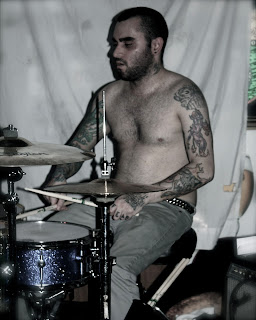In meditation, he finds meaning
Published: June 28, 2005
|
Of the News-Register
It was the 1960s - the dawning of the so-called "Age of Aquarius." The Beatles were cool, students were choosing to make love rather than war and the peace symbol was becoming an entire generation's emblem of nonconformity.
Blaze Compton, now a 56-year-old Dayton resident, came of age during that period. And it put an indelible mark on his thinking.
He has always emphasized the spiritual over the material. In fact, he has dedicated his adult life to seeking spiritual enlightenment.
"What is the universal presence we feel?" he asks. "It is a reality beyond this mind, beyond the thinking mind," he asserts. "It is a kind of contemplation dealing with an incomprehensible direct experience beyond perception."
Compton has found meaning in meditation, and has made it his life's work to share with others. To that end, he has established the Yamhill County Mindfulness Practice Center at 6995 S.E. Webfoot Road in Dayton. He can be reached there at 503-864-4682.
Devotees meet there at 7 p.m. the first and third Mondays of each month for meetings that are open to all interested members of the public.
Compton serves as the group's "sangha." The title marks someone who has attained the first stage of awakening under the teachings he follows.
His aim is to help people have experiences rich enough to be physically apparent, "not just emotional or perceptual."
Compton said he has been deeply interested in meditation and spirituality since childhood.
As a first-grader attending a Catholic school, he recalls a priest posing the questions, "What is being?" He said it became a lifelong quest for him, and he has found his answers through meditation.
"I spent time with the Maharishi and learned transcendental meditation," he said, speaking of Maharishi Mahesh Yogi, founder of Maharishi Vedic University. "He told me to go out and teach everybody that the essence of health lies in the benefits of meditation."
But he said transcendental meditation is just one of the forms he is versed in.
"I originally studied Vadanta," Compton said. He has also studied various forms of Buddhist meditation, including Zen and Nagda Rede Yoga, he said.
According to Charles S. Prebish, author of "American Buddhism," elements of American culture began to develop an interest in Buddhism - especially Tibetan Buddhism - about 10 years after the end of World War II. He said the so-called "Zen Explosion" really took off in the late 1960s, which coincided with Compton's late teens and early 20s.
Originally from Ohio, Compton saw Army service during the Vietnam War, sharing a life-altering experience with many of his contemporaries. He got married in that period of his life, but it didn't last.
He moved to Oregon in 1986, following his ex-wife out to maintain contact with a daughter from that marriage, then 10.
He has since remarried. He said he is living a simple life in Dayton with his new family, consisting of a wife and daughter.
Compton said he has studied under a variety of teachers in a variety of settings over the years.
At one point, he said, he entered into a "master to novice" mentoring relationship that dictated maintaining a subsistence lifestyle.
"We lived off miracles," he said. "The work we did was about energy, being in the moment."
Recently, he has been pursuing more conventional studies. He said he just completed a bachelor's degree at Western Oregon University and has been offered a teaching assignment there in the fall.
"I want to have a solid background in scientific research methods as they pertain to meditation, especially brain research, so that I can represent meditation as professionally and as scientifically as possible," he said.
He is teaching meditation on a volunteer basis at the Oregon State Penitentiary and Oregon State Correctional Institution in Salem, and has been asked about developing a program for the Two Rivers Correctional Institution in Umatilla.
Meanwhile, he is helping develop what he's billing as "one of the world's largest databases of published, peer-reviewed, scientific research on the psychological and physiological benefits of meditation."
But he's not making any money doing any of that. So how is his family getting by?
"I make a little money writing crossword puzzles for a specialty TV guide out of Atlanta, and Laura and I clean the Cozine House in McMinnville once a month," he said. "Other than school financial aid, that's it."
Living simply is something he practices as well as preaches.
Copyright by the News-Register














 SAN DIEGO (CN) - Two dozen Border Patrol agents beat a man to death at the San Ysidro Port of entry while onlookers screamed for them to stop, his family says in Federal Court.
SAN DIEGO (CN) - Two dozen Border Patrol agents beat a man to death at the San Ysidro Port of entry while onlookers screamed for them to stop, his family says in Federal Court.  RIVERSIDE, Calif. (CNS) - The Vagos Motorcycle Club claims Riverside County District Attorney Rod Pacheco defamed them by calling them a "criminal organization" of "cockroaches" and "terrorists."
RIVERSIDE, Calif. (CNS) - The Vagos Motorcycle Club claims Riverside County District Attorney Rod Pacheco defamed them by calling them a "criminal organization" of "cockroaches" and "terrorists." 










